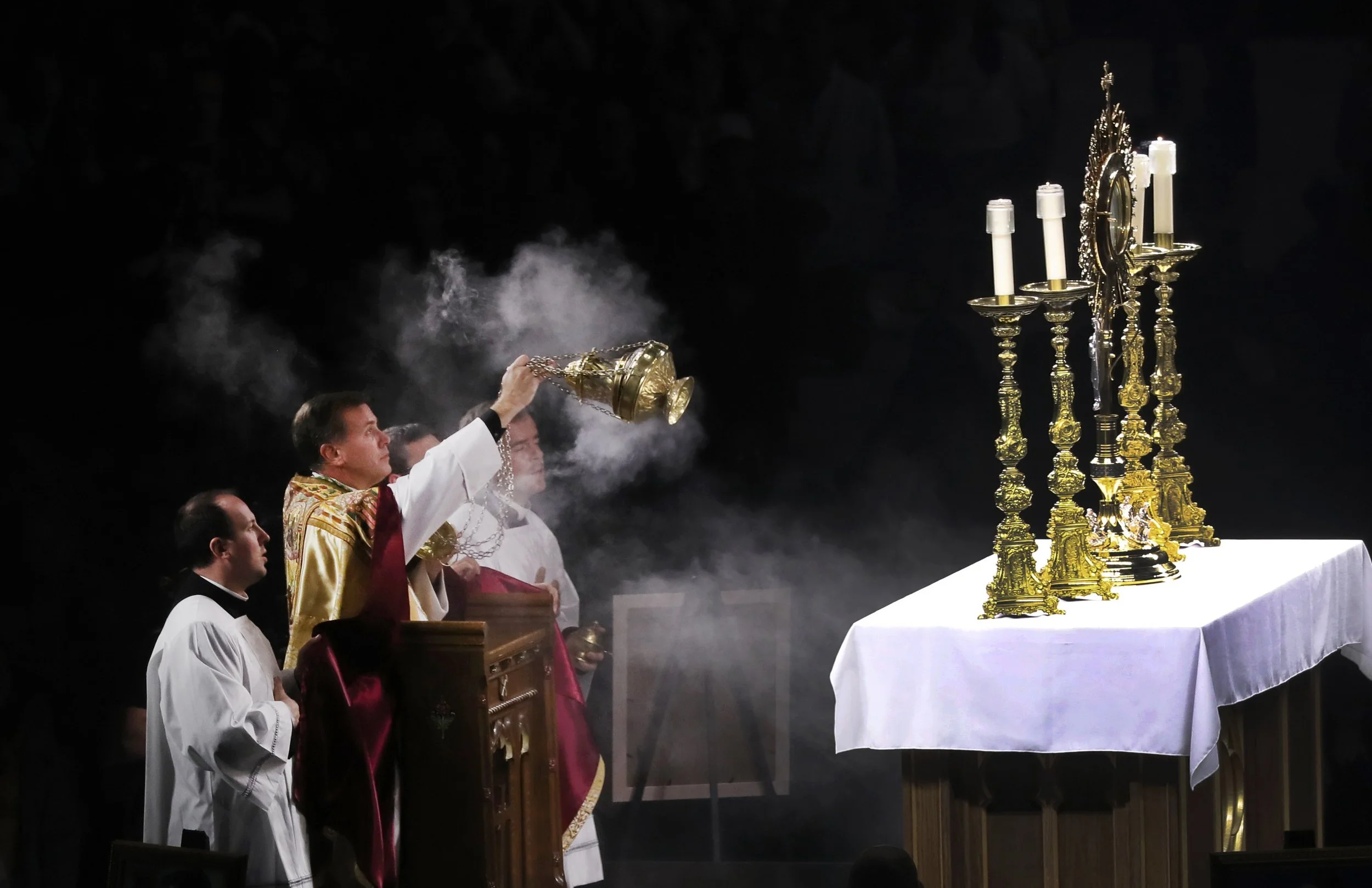Returning to the Heart of the Church
Among the many treasures of the Catholic faith, none surpasses the sublime mystery of the Eucharist. It is “the source and summit of the Christian life” (Lumen Gentium, 11), the sacrament in which Christ becomes truly present—Body, Blood, Soul, and Divinity—to nourish His people and unite them in His Paschal Sacrifice. Yet, in every age, the Church is called to renew her reverence, understanding, and love for this Mystery of Faith. Today, amid a climate of secularism, spiritual apathy, and fragmentation, Eucharistic renewal emerges not merely as a liturgical concern but as a profound pastoral imperative. It beckons the Church to return to the very heart of her identity.
I. Rediscovering Real Presence
At the core of Eucharistic renewal lies the call to reclaim belief in the Real Presence of Jesus Christ. Surveys and pastoral experience alike reveal a troubling erosion of this foundational doctrine, even among regular Mass-goers. The temptation to reduce the Eucharist to a mere symbol severs the faithful from the profound awe and adoration due to the living God who humbles Himself under sacramental signs.
Renewal, therefore, must begin with formation—catechesis that is not dry or abstract, but radiant with wonder. Preaching, small group formation, youth ministry, and sacramental preparation should all converge on one truth: the Eucharist is not a representation but a Real Person, offering Himself in perpetual love. Eucharistic theology must echo the mysticism of saints like Thomas Aquinas and Catherine of Siena, while speaking the language of a wounded, searching world. Only when the veil is lifted, and Christ is recognised in the breaking of the bread, can hearts burn anew with love for Him.
II. Adoration and Intimacy
Another pillar of renewal is the rediscovery of Eucharistic Adoration. Exposition of the Blessed Sacrament, holy hours, processions, and quiet moments before the tabernacle all help cultivate a culture of prayer centred on the Eucharist. In these sacred encounters, the soul learns to listen, to offer, and to gaze in silence upon the One who first gazed in love.
In an age marked by noise and distraction, adoration becomes a radical act. It speaks of presence over productivity, intimacy over efficiency. It is here that vocations are discerned, wounds are healed, and the faithful are drawn deeper into the mystery they celebrate at Mass. Parishes that invest in this contemplative tradition often discover a spiritual reawakening that radiates far beyond the chapel walls.
III. Liturgical Reverence and Sacred Beauty
The celebration of the Eucharist itself must be marked by reverence, intentionality, and beauty—qualities that form the very architecture of liturgical renewal. The ars celebrandi (“art of celebrating”) is not a matter of performance but of fidelity to the Mystery. The priest, acting in persona Christi capitis, is both servant and steward of something infinitely greater than himself.
Sacred music, dignified vestments, art, architecture, and ritual all contribute to the atmosphere that signals, “This is holy ground.” Whether in the grandeur of a cathedral or the humility of a mission church, the Mass should always lift hearts to God. A renewed attention to silence, sacred posture, and well-prepared homilies can draw the faithful into deeper participation, as they encounter not a human gathering, but a divine liturgy.
IV. From Altar to Life: Missionary Impulse
Eucharistic renewal must not end at the sanctuary. It must bear fruit in lives transformed—disciples who carry Christ into the world. The Eucharist, after all, is not static; it propels. “The Mass is ended” is not a conclusion but a commission. Those who consume the Lord must become what they receive: bread broken for others, presence for the lonely, mercy for the wounded.
This missionary dynamism is especially critical today. The Church cannot afford to allow a devout interiority to become insular. A revived love for the Eucharist should animate works of charity, parish outreach, evangelisation, and advocacy for the poor. In this way, the Sacrament becomes the font from which flows all authentic renewal, personal and communal.
V. Eucharistic Renewal and the Priesthood
For the Catholic priest, the Eucharist is both the summit and daily sustenance. The renewal of Eucharistic life in the Church necessarily begins in the heart of the one who offers the Sacrifice. A priest who celebrates the Mass with devotion, who spends time in Adoration, and who preaches the Eucharist with conviction becomes a vessel through which Christ renews His Church.
Priestly formation, therefore, must emphasise not only theological precision but Eucharistic spirituality. Seminarians should be steeped in the rhythms of liturgical life, trained to reverence the altar, and immersed in prayer before the Blessed Sacrament. Veteran priests, too, need opportunities for rekindling zeal through retreats, fraternity, and the faithful support of their people.
VI. Mary, Mother of the Eucharist
Every renewal in the Church occurs under the maternal gaze of Mary. She, who bore the Word made flesh, is the first tabernacle and the model of Eucharistic receptivity. In her fiat, we find the echo of every Amen uttered at Holy Communion. Marian devotion, particularly through the Rosary and feasts that highlight her relationship to Christ's sacrifice, can draw the faithful into deeper Eucharistic contemplation.
To place the Eucharist in Mary's hands is not sentimentalism—it is trust. Just as she formed Christ in her womb, so now she forms Him anew in the hearts of the faithful.
Conclusion: A New Springtime of Eucharistic Faith
Eucharistic renewal is not an optional initiative; it is the pulse of ecclesial life. In an age yearning for meaning, communion, and transcendence, the Church is uniquely positioned to unveil again the gift of Christ in the Eucharist. Through clear teaching, reverent liturgy, personal prayer, and outward mission, the mystery of the altar can ignite a fire of faith in the hearts of God’s people.
As Pope St. John Paul II declared, “The Church draws her life from the Eucharist.” To renew her life, then, is to return—humbly, joyfully, and boldly—to the altar, where love is always being poured out.


